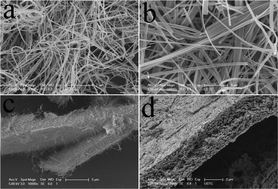An environmentally benign solvothermal method for the synthesis of nanostructured Cd5(OH)8(NO3)2(H2O)2: templates for the generation of nanoporous CdO materials with photocatalytic properties†
Abstract
Using Cd(NO3)2·4H2O as a precursor and

* Corresponding authors
a
Nanjing National Laboratory of Microstructures and Department of Physics, Nanjing University, Nanjing, People's Republic of China
E-mail:
wzhong@mail.nju.edu.cn
b
Laboratory of Catalysis Chemistry and Nanoscience, Department of Chemistry and Chemical Engineering, College of Environmental and Energy Engineering, Beijing University of Technology, Beijing, People's Republic of China
E-mail:
hxdai@bjut.edu.cn
Fax: +86-25-83595535
Tel: +86-25-83621200
c Chemistry Department, Hong Kong Baptist University, Hong Kong, People's Republic of China
Using Cd(NO3)2·4H2O as a precursor and

 Please wait while we load your content...
Something went wrong. Try again?
Please wait while we load your content...
Something went wrong. Try again?
Z. Yang, W. Zhong, L. Zhang, C. Au, H. Dai and Y. Du, Nanoscale, 2011, 3, 1887 DOI: 10.1039/C1NR10073D
To request permission to reproduce material from this article, please go to the Copyright Clearance Center request page.
If you are an author contributing to an RSC publication, you do not need to request permission provided correct acknowledgement is given.
If you are the author of this article, you do not need to request permission to reproduce figures and diagrams provided correct acknowledgement is given. If you want to reproduce the whole article in a third-party publication (excluding your thesis/dissertation for which permission is not required) please go to the Copyright Clearance Center request page.
Read more about how to correctly acknowledge RSC content.
 Fetching data from CrossRef.
Fetching data from CrossRef.
This may take some time to load.
Loading related content
